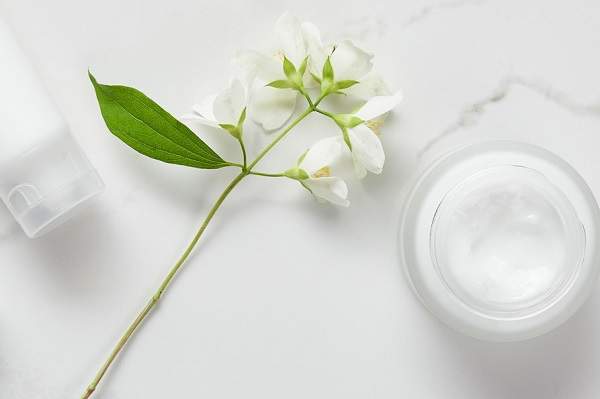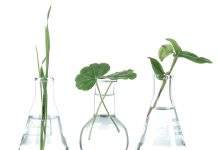The trend of natural body care products and cosmetics is rising. Consumers are increasingly paying attention to skin- and environment-friendly profiles. But how ‘natural’ are natural cosmetics and related products?
How do producers ensure the shelf life of shampoos, creams, gels, or lotions? Cosmetic products, in particular, contain a lot of water, around 50%-60%. A good breeding ground for micro-organisms. And natural products bring along their own microbes.
Preservatives – good or bad?
Preservatives prevent or inhibit the growth of microbes, such as bacteria, yeast, and mold. With the trend towards natural personal care products, producers are faced with major challenges. Recyclable packaging is just one of the challenges.
Let’s take a face cream as an example – Every day, we reach into the jar with our fingers. In the process, the bacteria from our fingers get into the product. But oxygen also gets into the cream and oxidizes it. This increases the risk of contamination. The only way to ensure that the products remain clean and free of bacteria and fungi is with appropriate preservatives.
Without preservatives, the alternative would be to store the jar in the refrigerator and use it up within a few days. But who what’s to do that? Besides rancid creams that can cause pimples and could impact our health, we would generate mountains of garbage stemming from wasted products. Goodbye sustainability.
“Preservatives are an essential component of cosmetic formulations. They prevent microbial contamination and serve to protect the consumer.” Dr Matthias Kunze, business development, flavors and fragrances business unit, Lanxess.
What are the preservation methods?
Preservatives are not bad per se – they sometimes have a bad reputation, but in fact, they are indispensable. However, you should know the different preservation methods to find out which product is right for you.
Preservation methods –
Nature-identical preservation
In nature-identical preservation, substances such as benzoic acid, which also occur in nature, are synthetically recreated. Benzoic acid occurs, for example, in foods such as raspberries, plums, or blueberries.
Nature-identical preservatives are in great demand. They are very pure and allow sustainability certifications, such as Cosmos or Nordic Swan.
The optimum preservative for cosmetics and personal care products must be able to do a number of things. It should have a broad spectrum of activity, be effective at low concentrations, and not be irritating to the skin. It must also remain stable at all temperatures and meet pH conditions.
Lanxess offers nature-identical preservatives based on high-purity benzoic acid to meet these challenges: Purox B and Purox S.
These preservatives are antimicrobial and can preserve care products with a pH of up to 6.5.
“Our sodium benzoate is one of the most sought-after preservatives for personal care products. It effectively protects sensitive products against spoilage over the long-term,” says Philipp Borgs, global marketing director, benzoate, flavors & fragrances business unit, Lanxess.
Natural preservation
Natural preservation uses pure natural products. These can include organic acids, alcohols, or oils. Cosmetic producers often have to add their preservatives in much higher concentrations to achieve the desired effectiveness. However, this high concentration can precisely lead to skin irritations or allergies, even in the case of natural substances. Tea tree oil is one example of this.
In addition to skin-friendliness, the fragrance is a purchasing aspect of care products and cosmetics. Natural fragrances such as citronellol or citral are often added to meet this. While the fragrance is welcome, it can trigger allergies. Linalool, a colorless oil, is also widely used in the manufacture of soaps and fragrances but is suspected of causing skin irritations. It can damage the eyes and mucous membranes. So even natural products can be problematic.
Conventional preservation
Conventional preservation uses synthetic preservatives such as formaldehyde releasers, organo-halogen compounds, or isothiazolinones. The advantage of these preservatives: The efficacy is achieved with a low concentration. This makes them more economical.
In terms of safety, no compromises are made with either nature-identical or conventional preservatives, as the use of any active ingredients is regulated by the European Cosmetics Regulation.
European Cosmetics Regulation
The European Cosmetics Regulation serves consumer safety. Part of this cosmetics regulation is the so-called Annex V list. This list defines which molecules may be effectively used for cosmetics preservation and determines the concentration of the substances.
Fewer than ten are currently used on a larger scale for the preservation of the approximately sixty active Annexe V-listed molecules. And these are again limited in their effectiveness by parameters such as pH, solubility, and formula compatibility.
The International Nomenclature of Cosmetic Ingredients (INCI) also regulates the correct listing of ingredients in personal care products. It allows allergy sufferers to check the products for questionable ingredients before buying them.
What should I look for when buying personal care products?
Some consumers swear by pure natural products, others appreciate a longer shelf life. There is no right or wrong approach. Everyone has to find the right product for their situation and weigh the advantages and disadvantages. Apps like CodeCheck or ToxFox help to identify questionable ingredients.
Keep in mind – Natural products can also contain nature-identical preservatives. And the term ‘organic’ is not protected in cosmetics, so you should always carefully read the label.
Lanxess products for nature-identical preservation
Purox B
Purox B is a nature-identical preservative. It is one of the purest benzoic acids available on the market. Purox B is used as a safe and effective preservative in personal care and cosmetic products. But this very versatile product can be used in pharmaceuticals and food products like pizzas, tortillas, and fish.
Purox S
Purox S is a good alternative to isothiazolinones or formaldehyde releasers in personal care products. It safely and effectively inhibits microbial growth in cosmetics, as well as in food, beverages, toiletries, and pharmaceuticals, up to a pH of 6.5.
It is approved by the Food and Drug Administration (FDA) and the European Food and Safety Authority (EFSA) as a food additive and is also known as E211.









